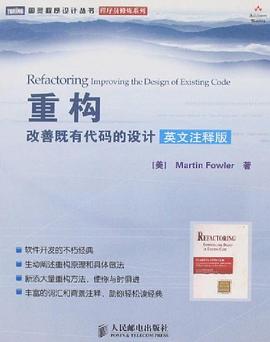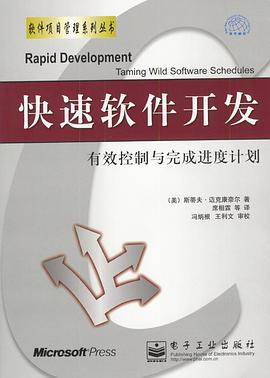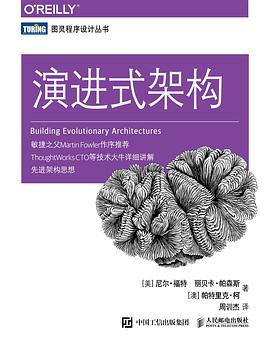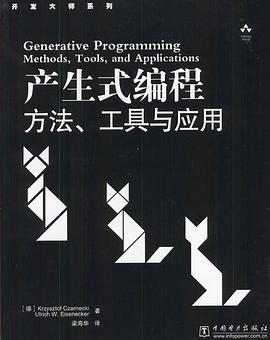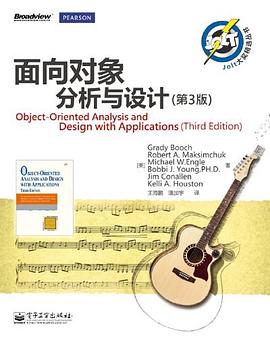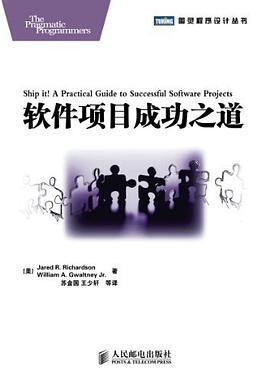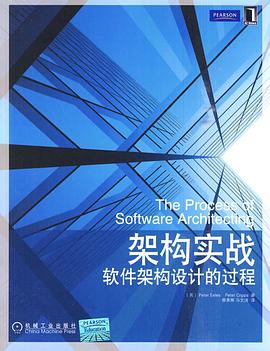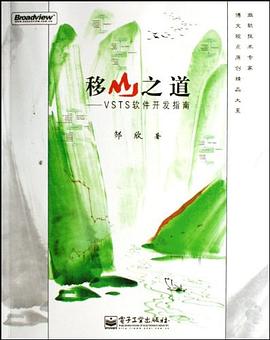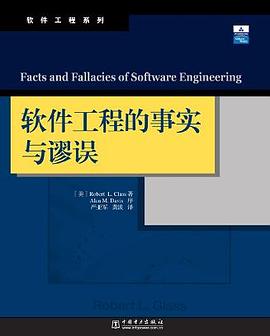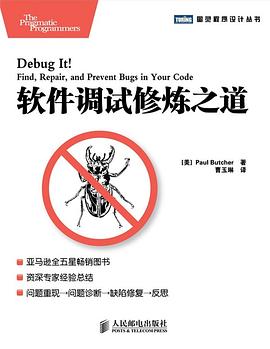Chapter 1:Refactoring,a First Example 重構,第一個例子
The Starting Point 起點
The First Step in Refactoring 重構第一步
Decomposing and Redistributing the Statement Method 分解並重組slalemenl方法
Replacing the Conditional Logic on Price Code with Polymorphism 用多態代替價格條件邏輯代碼
Final Thoughts 結語
Chapter 2:Principles in Refactoring 重構原則
Defining Refactoring 何謂重構
Why Should You Refactor? 為何重構
When Should You Refactor? 何時重構
What Do I Tell My Manager? 怎樣說服經理
Problems with Refactoring 重構的問題
Refactoring and Design 重構與設計
Refactoring and Performance 重構與性能
Where Did Refactoring Come From? 重構的起源
Chapter 3:Bad Smells in Code(by Kent Beck and Martin Fowler) 代碼壞昧
Duplicated Code 重復代碼
Long Method 過長方法
Large Class 過長類
Long Parameter List 過長參數列錶
Divergent Change 發散式變化
Shotgun Surgery 霰彈式修改
Feature Envy 特性依戀
Data Clumps 數據泥團
Primitive Obsession 基本類型偏執
Switch Statements switch語句
Parallel Inheritance Hierarchies 平行繼承體係
Lazy Class 冗餘類
Speculative Generality 理論上的一般性
Temporary Field 臨時字段
Message Chains 消息鏈
Middle Man 中間人
Inappropriate Intimacy 過度親密
Alternative Classes with Different Interfaces 接口不同的等效類
Incomplete Library Class 不完整的庫類
Data Class 數據類
Refused Bequest 拒絕繼承
Comments 注釋過多
Chapter 4:Building Tests 構建測試
The Value of Self-testing Code 自測試代碼的重要性
The JUnit Testing Framework Junit測試框架
Adding More Tests 添加更多測試
Chapter 5:Toward a Catalog of Refactorings 重構目錄
Format of the Refactorings 重構描述的格式
Finding References 尋找引用
How Mature Are These Refactorings? 這些重構的成熟度如何
Chapter 6:Composing Methods 組閤方法
Extract Method 提取方法
Inline Method 內聯方法
Inline Temp 內聯臨時變量
*Replace Temp with Query 用查詢方法代替臨時變量
Introduce Explaining Variable 引入解釋性變量
Split Temporary Variable 分離臨時變量
*Remove Assignments to Parameters 去除參數賦值
Replace Method with Method Object 用方法對象代替方法
Substitute Algorithm 替換算法
Chapter 7:Moving Features Between Objects 在對象之間移動特性
*Move Method 移動方法
Move Field 移動字段
Extract Class 提取類
Inline Class 內聯類
Hide Delegate 隱藏委托類
Remove Middle Man 去除中間人
Introduce Foreign Method 引入外加方法
*Introduce Local Extension 引入本地擴展類
Chapter 8:Organizing Data 組織數據
Self Encapsulate Field 自封裝字段
Replace Data Value with Object 用對象代替數據值
Change Value to Reference 將值對象改為引用對象
Change Reference to Value 將引用對象改為值對象
Replace Array with Object 用對象代替數組
Duplicate Observed Data 重復被觀察數據
*Change Unidirectional Associationto Bidirectional 將單嚮關聯改為雙嚮
Change Bidirectional Association to Unidirectional 將雙嚮關聯改為單嚮
*Replace Magic Number with Symbolic Constant 用字麵常量代替魔數
Encapsulate Field 封裝字段
Encapsulate Collection 封裝集閤
Replace Record with Data Class 用數據類代替記錄
*ReplaceType Code with Class 用類代替類型碼
Replace Type Code with Subclasses 用子類代替類型碼
Replace Type Code with State/Strategy用State/Strategy 代替類型碼
Replace Subclass with Fields 用字段代替子類
Chapter 9:Simplifying Conditional Expressions 簡化條件語句
Decompose Conditional 分解條件語句
Consolidate Conditional Expression 閤並條件語句
Consolidate Duplicate Conditional Fragments 閤並重復的條件片段
Remove Control Flag 去除控製標誌
Replace Nested Conditional with Guard Clauses 用守衛語句代替嵌套條件語句
Replace Conditional with Polymorphism 用多態代替條件語句 Introduce Null Object 引入Null對象
Introduce Assertion 引入斷言
Chapter 10:Making Method Calls Simpler 簡化方法調用
Rename Method 重命名方法
Add Parameter 添加參數
Remove Parameter 去除參數
Separate query from Modifier 將查詢方法與修改方法分離
Parameterize Method 參數化方法
Replace Parameter with Explicit Methods 用顯式方法代替參數
Preserve Whole Object 保持對象完整
Replace Parameter with Method 用方法代替參數
Introduce Parameter Object 引入參數對象
Remove Setting Method 去除設置方法
Hide Method 隱藏方法
Replace Constructor with Factory Method 用工廠方法代替構造器
Encapsulate Downcast 封裝嚮下轉型
Replace Error Code with Exception 用異常代替錯誤碼
Replace Exception with Test 用測試代替異常
Chapter 11:Dealing with Generalization 處理泛化關係
Pull Up Field 上移字段
Pull UP Method 上移方法
Pull Up Constructor Body 上移構造器主體
Push Down Method 下移方法
Push Down Field 下移字段
Extract Subclass 提取子類
Extract Superclass 提取超類
Extract Interface 提取接口
Collapse Hierarchy 閤並繼承層次
Form Template Method 形成Template Method
Replace Inheritance with Delegation 用委托代替繼承
Replace Delegation with Inheritance 用繼承代替委托5
Chapter 12:Big Refactorings(by Kent Beck and Martin Fowler) 大型重構
Tease Apart Inheritance 分解繼承層次
Convert Procedural Design to Objects 將過程式設計轉換為麵嚮對象
Separate Domain from Presentation 將領域邏輯與錶現分離
Extract Hierarchy 提取繼承層次
Chapter 13:Refactoring,Reuse,and Reality(by William Opdyke) 重構,復用與現實
A Reality Check 現實的檢驗
Whv Are Developers Reluctant to Refactor Their Programs? 開發人員為何不願重構程序
A Reality Check(Revisited) 再談現實的檢驗
Resources and References for Refactoring 重構的資源和參考文獻
Implications Regarding Software Reuse and Technology Transfer 對軟件復用與技術傳播的意義
A Final Note 結語
References 參考文獻
Chapter 14:Refactoring Tools(by Don Roberts and John Brant) 重構工具
Refactoring with a Tool 使用工具重構
Technical Criteria for a Refactoring Tool 重構工具的技術標準
Practical Criteria for a Refactoring Tool 重構工具的實用標準
Wrap Up 結語
Chapter 15:Putting It All Together(by Kent Beck) 集大成
References參考文獻
List of Soundbites 要點列錶
Updates 更新內容
Index 索引
· · · · · · (
收起)
